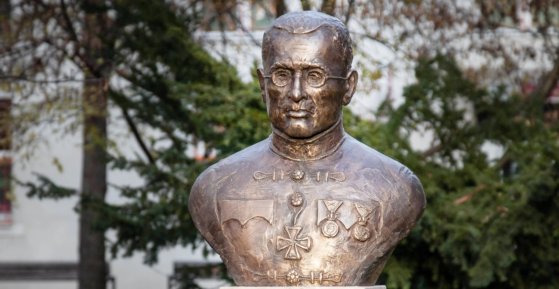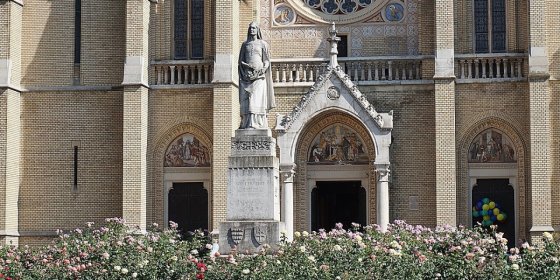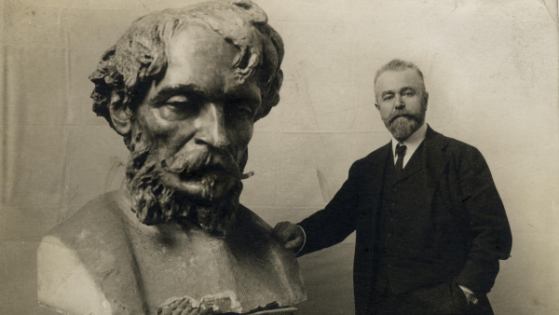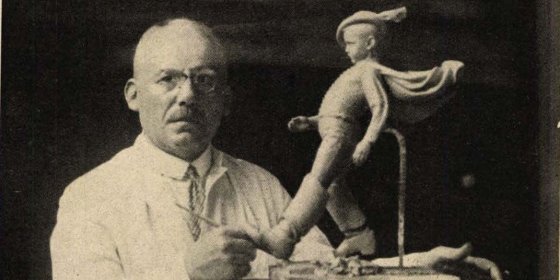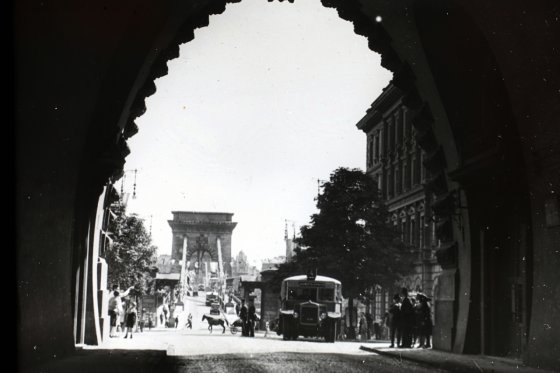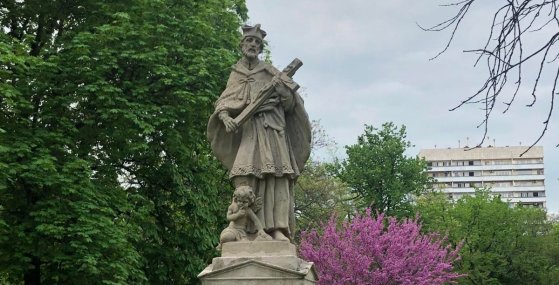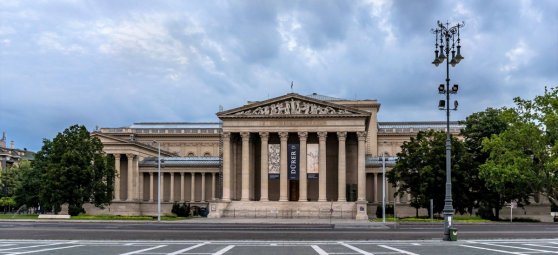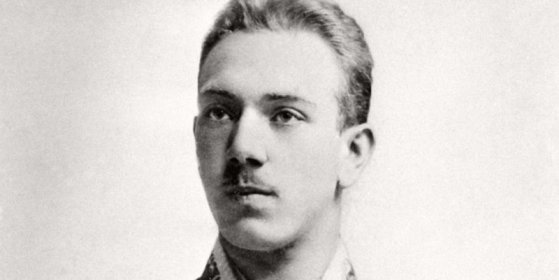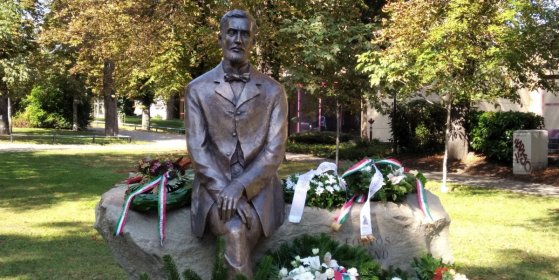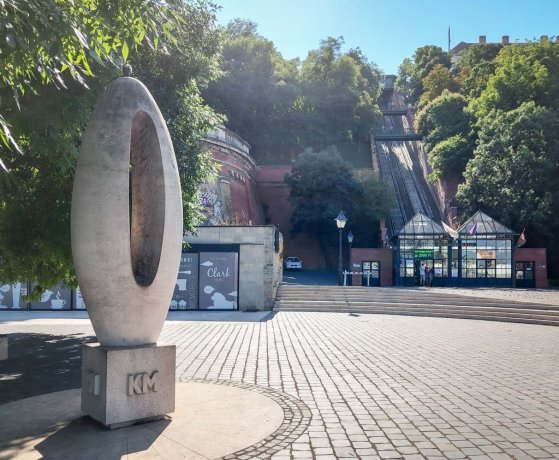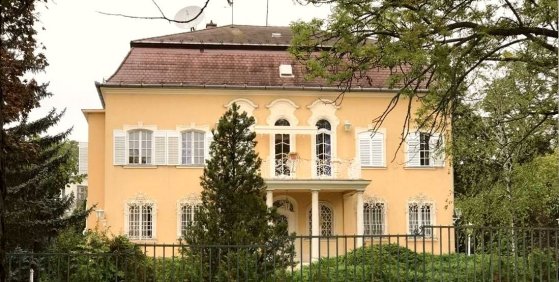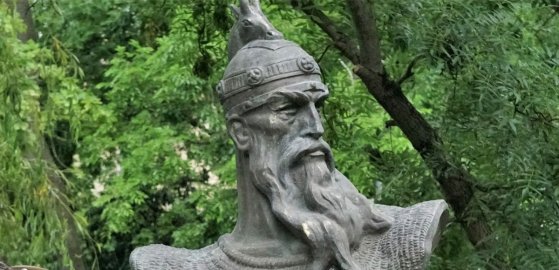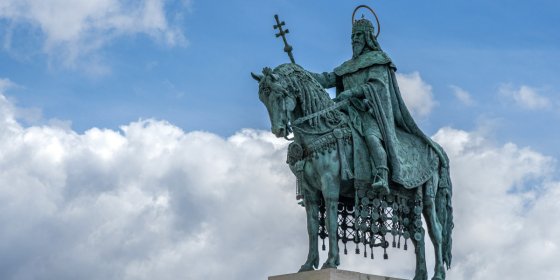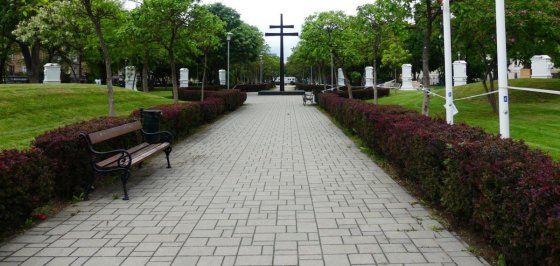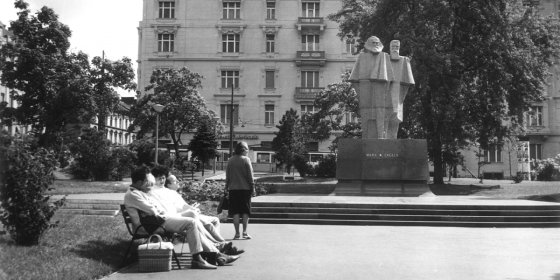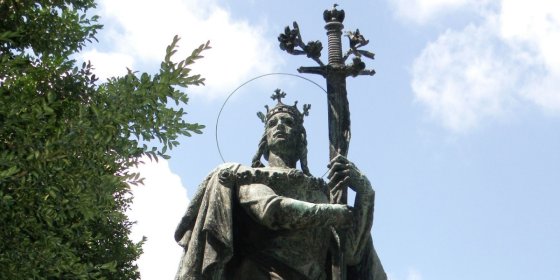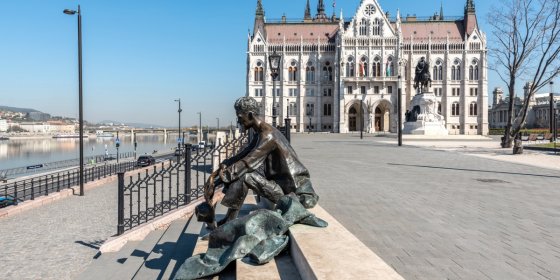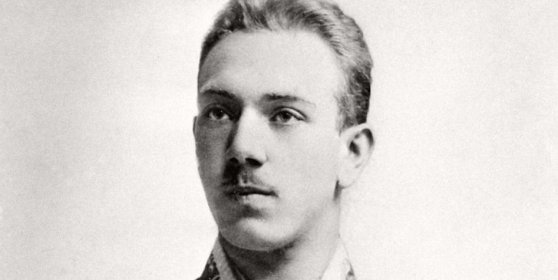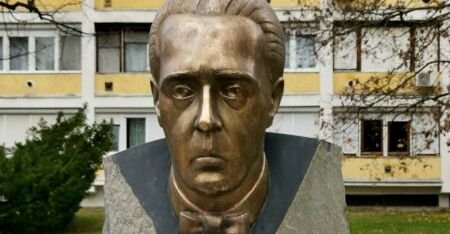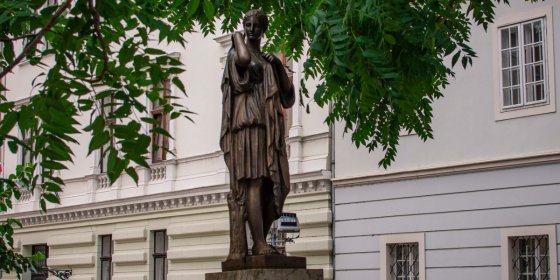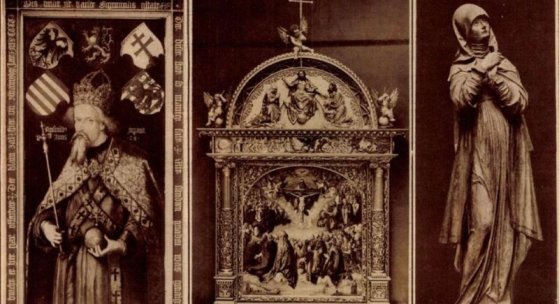 The „intertwined history” of the bridges and the city of Budapest
Which ideas and events have shaped the fate of bridges of Budapest and the cityscape? Alongside many other interesting facts, this question is also answered this newly published book by the Budapest City Archives, which introduces the history of bridges in Budapest.
The „intertwined history” of the bridges and the city of Budapest
Which ideas and events have shaped the fate of bridges of Budapest and the cityscape? Alongside many other interesting facts, this question is also answered this newly published book by the Budapest City Archives, which introduces the history of bridges in Budapest.
sculpture
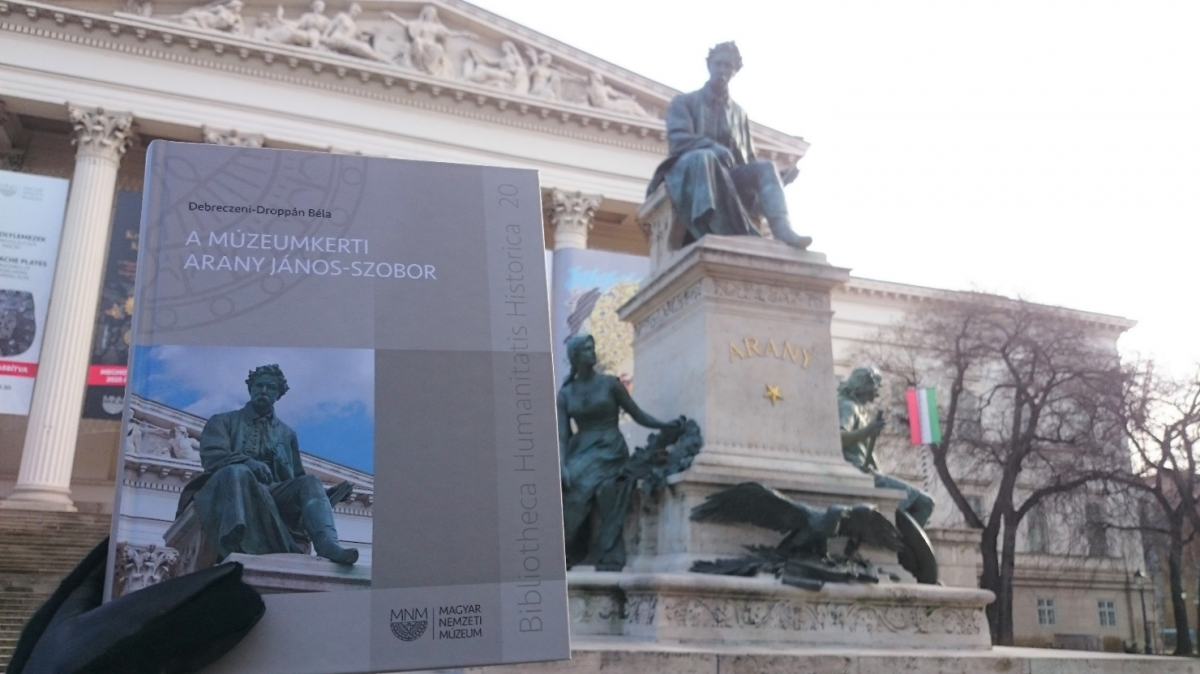 The meeting of a unique sculptor and the cult of Arany - Description of a period with the help of a 130-year-old famous monument in Pest
The meeting of a unique sculptor and the cult of Arany - Description of a period with the help of a 130-year-old famous monument in Pest
January 31, 2023 at 9:00 AM
130 years ago the first public statue of János Arany was inaugurated in front of the main entrance of the Hungarian National Museum. In a new book that has just been published, not only is the entire history of the monument and the adventurous life of its creator, Alajos Stróbl, revealed to the readers, but they can also see how the people of the 19th century thought and debated, what they considered beautiful and right, what they were different from or just similar to people now. The book, which is also rich in images, is both a colourful introduction and an exciting description of a period.
The bust of Viktor Maderspach was inaugurated in the 16th District
December 7, 2022 at 6:00 PM
Transylvanian Hungarian writer, soldier, and engineer Viktor Maderspach received a bust in Erzsébétliget in the 16th District. After the proclamation of the Treaty of Trianon, he had to flee his native Transylvania, leaving his family’s estate behind. He found a new home in Mátyásföld in 1934.
Sculptor József Damkó was born 150 years ago - His works can be admired all over the capital
October 17, 2022 at 2:00 PM
Undeservedly little is said about sculptor József Damkó, even though the artist produced many works that stand at important points in the Hungarian capital. Such is the statue of Saint Elizabeth of the House of Árpád on Rózsák Square, the statue of St. John of Capistrano on Kapisztrán Square in Buda Castle or the statue of Pope Innocent XI on Hess András Square. His architectural sculptures and tombstones are also of considerable value. Pestbuda now presents the Budapest works of József Damkó on the 150th anniversary of his birth.
Throughout the city, you can admire the statues of György Zala, who died 85 years ago
August 1, 2022 at 11:30 AM
György Zala owes the central sculpture group of the Millennium Monument on Hősök Square with the Archangel Gabriel to György Zala, as well as the original Andrássy and István Tisza statues in Kossuth Square, or the dignified seated statue of Queen Elizabeth in today's Döbrentei Square. Zala was one of the busiest sculptors of his time, and his legacy has an architectural aspect: his villa in Pest was designed by none other than the master of Art Nouveau, Ödön Lechner.
Ede Telcs, born 150 years ago, created masterpieces in various areas of sculpture
May 13, 2022 at 2:00 PM
Ede Telcs is an outstanding figure in Hungarian sculpture, and his works in Budapest include representative public monument, tombstone and architectural sculpture. His works adorning the Hungarian capital were mostly placed in City Park and the National Graveyard on Fiumei Road, as well as in the city centre. His work is intertwined with the life of the famous personalities, mainly with the architect Ignác Alpár, of Budapest which was developing into a world city.
The first Zero Kilometre Stone was placed in Clark Ádám Square 90 years ago
May 7, 2022 at 10:00 AM
All roads lead to the Chain Bridge. This saying is true in that the length of the main roads starting from Budapest is calculated in kilometres from here, the Chain Bridge, more precisely from Clark Ádám Square on the Buda side. To mark this, the first 0-kilometre stone was inaugurated here on 7 May 1932, 90 years ago.
The statue of St. John of Nepomuk in Krisztinaváros is being restored
April 30, 2022 at 4:00 PM
The statue of St. John of Nepomuk in the Horváth Garden is being renovated. The original of the work dates back to the 19th century. It preserved the banks of the Devil's Trench from the first half of the 19th century, but the old, damaged statue was demolished in the 1960s, and in 1999 the statue, which can still be seen today, was completed and restored.
The Church of Arts - The building of the Museum of Fine Arts is 115 years old
December 5, 2021 at 11:00 AM
The Museum of Fine Arts is one of the most famous buildings in the country, without which the Heroes' Square is unimaginable. Yet this was erected the latest, it is ten years younger than the Kunsthalle opposite. However, its size and seriousness make this fact forgettable - and of course it is no longer young, it was opened to the public 115 years ago. In this context, Pestbuda presents its history and beautiful interiors, which house one of the richest art collections in Central Europe.
A statue pays tribute to the legacy of Alfred Hajós
November 28, 2021 at 3:00 PM
The Hungarian Jewish Cultural Association (Mazsike) and the MANK Hungarian Creative Public Nonprofit Ltd. want to pay tribute to Alfred Hajós, first champion of the modern Olympic games.
The Garden of Philosophy was inaugurated on Gellért Hill 20 years ago
October 18, 2021 at 10:00 AM
The sculpture composition called Garden of Philosophy has been standing on Gellért Hill for twenty years now. The work, which depicts the world's leading thinkers and founders of world religions, was donated to Budapest by Nándor Wagner, a sculptor of Hungarian origin living in Japan.
A statue was erected for Loránd Eötvös, who served universal science with a Hungarian heart
October 6, 2021 at 2:00 PM
One of the most famous Hungarian scientists is immortalised in many reliefs and busts in Budapest, but previously he only had one life-sized statue: it was erected in 2016 in Pest, in front of the central building of the University named after him. Now a new statue has been placed in the Gesztenyés Garden in the 12th District of Buda, and the place is closely connected to him as well: his most famous invention, the torsion pendulum was produced in the predecessor of the Hungarian Optical Works operating next door.
Miklós Borsos, who made the Zero Kilometre Stone, was born 115 years ago
August 13, 2021 at 9:00 AM
Miklós Borsos, who was recognised as a sculptor, medalist and graphic artist, was born on 13 August 1906, in Nagyszeben (today's Sibiu, Romania), Transylvania, 115 years ago. He lived in Győr, and then in Budapest from 1945. In winter, he worked in the Castle District, at 6 Úri Street, and in summer, in Tihany; his permanent museum can be visited in Győr. Several of his works can be seen in Budapest, and a few of his works involuntarily attracts attention.
Árpád Göncz and his wife will receive a statue in Vérhalom Square
July 21, 2021 at 4:00 PM
A tender was announced for the creation of a double statue of the former President of the Republic and his wife, which will be located in Vérhalom Square in the 2nd District, near the last home of the Göncz couple.
A statue was erected for Skanderbeg, an ally of János Hunyadi, in the Városliget
July 5, 2021 at 4:00 PM
The bust of Skanderbeg was inaugurated in the neighborhood of Vajdahunyadvár, on the Platán promenade in the Városliget. The work is a gift from the city of Tirana to Budapest. Albanian prince Skanderbeg once fought in alliance with János Hunyadi against the expansion of the Ottoman Empire.
The first statue of Saint Stephen in Budapest was completed in 1906
May 25, 2021 at 10:00 AM
The statue of Saint Stephen has been standing in Buda Castle next to the Fisherman's Bastion for 115 years. Although the founding king of Hungary has always been highly respected in the country, the great work of Alajos Strobl was completed slowly. The first statue of King Stephen in Budapest was inaugurated in 1906 next to Matthias Church almost 40 years after it was first planned.
Stone column of every station standing on Golgotha Square
May 23, 2021 at 6:00 PM
Fourteen stone statues have already been erected on Golgota Square in Józsefváros. Bronze reliefs depicting the stations of the cross have been placed within them. The restoration of the stations was initiated by the Józsefváros Local Council in 2019 and is being carried out with state funding.
The statue of Marx and Engels inaugurated fifty years ago
April 28, 2021 at 12:00 AM
The theoretical foundations of communism were laid by a German philosopher and a wealthy German merchant. Neither of them were workers, yet they hatched plans for a perfect state of workers. In addition to Lenin, socialism considered Marx and Engels to be the “apostles” of the system. Their portraits hang in all the most notable places and events, yet a statue of the two founders was only erected in Budapest relatively late, in 1971 on Jászai Mari Square.
The cult of Saint Emeric of Hungary – The 18th District stands in memory of the Prince
April 14, 2021 at 10:30 AM
Hungary celebrated the life of Saint Emeric, the son of the country's first King, Saint Stephen, 90 years ago. On the 900th anniversary of the death of Prince Emeric (Imre), who was consecrated together with his father in 1083, a large-scale memorial year was organized in 1930–1931 and the village of Pestszentimre was named after him, which in 1950 became part of the 18th District of Budapest. The church in the district also bears the name of the prince, and the first public statue of the district also depicts Saint Emeric.
Statue of Attila József unveiled on Kossuth Square 40 years ago
December 29, 2020 at 9:00 AM
A few years ago, the temporary removal of the Attila József statue – erected in 1980 on the site of the former Andrássy monument – from Kossuth Square due to the area's renovation caused an enormous uproar. Many believed that the work had been removed permanently. But a few months later, the statue was on Kossuth Square again. Although it was not put back in its original place, many say it found a better place only a few metres away, on the riverbank.
Statue of Alfred Hajós planned for Margit Island
December 28, 2020 at 2:00 PM
A tender has been announced for the creation of a statue of Alfred Hajós. The sculpture will be erected on Margit Island, which is connected to Alfred Hajós's intellectual and professional heritage.
Márai statue unveiled in Újpest
November 19, 2020 at 9:00 AM
The new bronze bust of the writer Sándor Márai was erected in the suburbs of Újpest on Szent László Square.
A wandering Greek goddess that found a home next to Magdolna Tower – The Hebe Fountain has stood at several points of Buda Castle
August 17, 2020 at 9:00 AM
The Hebe Fountain in Buda Castle, also known as the Artemis Fountain, now stands in an intimate little unnamed square at the foot of the Magdolna Tower, at the northern end of Úri Street. It seems that this 19th century well statue, previously erected in two other places in the Castle, has found its final home. For various reasons, the Greek goddess has been moved from two other locations before. The nomadic statue also has two names: after its inauguration, it was identified from Greek mythology as the figure of Hebe, when in fact, it was a copy of a statue of Artemis in Paris.
Dürer in Budapest – The Hungarian roots of an internationally respected painter
July 14, 2020 at 11:00 AM
Ajtósi Dürer Way is a busy and well-known road that runs alongside City Park. However, the roots of its name are less well-known. Albrecht Dürer was a world-renowned Bavarian Renaissance painter with Hungarian roots. His father was born in the Hungarian village of Ajtós next to Gyula, from where he emigrated to Nuremberg, where the famous artist was later born. The Hungarian roots of the painter were a well-known fact in Nuremberg as well. Thus, on the 400th anniversary of this death, a delegation from the city visited Budapest. The Bavarians gave the Hungarian capital a unique statue to commemorate the event, while Budapest named a road after the famous painter.
More articles
 The „intertwined history” of the bridges and the city of Budapest
Which ideas and events have shaped the fate of bridges of Budapest and the cityscape? Alongside many other interesting facts, this question is also answered this newly published book by the Budapest City Archives, which introduces the history of bridges in Budapest.
The „intertwined history” of the bridges and the city of Budapest
Which ideas and events have shaped the fate of bridges of Budapest and the cityscape? Alongside many other interesting facts, this question is also answered this newly published book by the Budapest City Archives, which introduces the history of bridges in Budapest.
 The Bridge Report, which brought a turning point in the history of Budapest
A travel report that changed the history of Pest and Buda, as well as Hungary. The little book contributed to the change of half a thousand years of legal customs and the implementation of an investment of unprecedented size and technical quality. This book was The Bridge Report [Hídjelentés in Hungarian].
The Bridge Report, which brought a turning point in the history of Budapest
A travel report that changed the history of Pest and Buda, as well as Hungary. The little book contributed to the change of half a thousand years of legal customs and the implementation of an investment of unprecedented size and technical quality. This book was The Bridge Report [Hídjelentés in Hungarian].
 Drama on the university wall - The heroic monument was planned 95 years ago
In the constant hustle and bustle of the Egyetem Square in Pest, the students may not even notice the monument that decorates the short section of wall between the church and the central building of ELTE. However, it commemorates their predecessors, the heroes who fought for their country in World War I, and those who heroically helped them. The first design of the dramatically collapsing soldier was born in 1928, ninety-five years ago.
Drama on the university wall - The heroic monument was planned 95 years ago
In the constant hustle and bustle of the Egyetem Square in Pest, the students may not even notice the monument that decorates the short section of wall between the church and the central building of ELTE. However, it commemorates their predecessors, the heroes who fought for their country in World War I, and those who heroically helped them. The first design of the dramatically collapsing soldier was born in 1928, ninety-five years ago.

